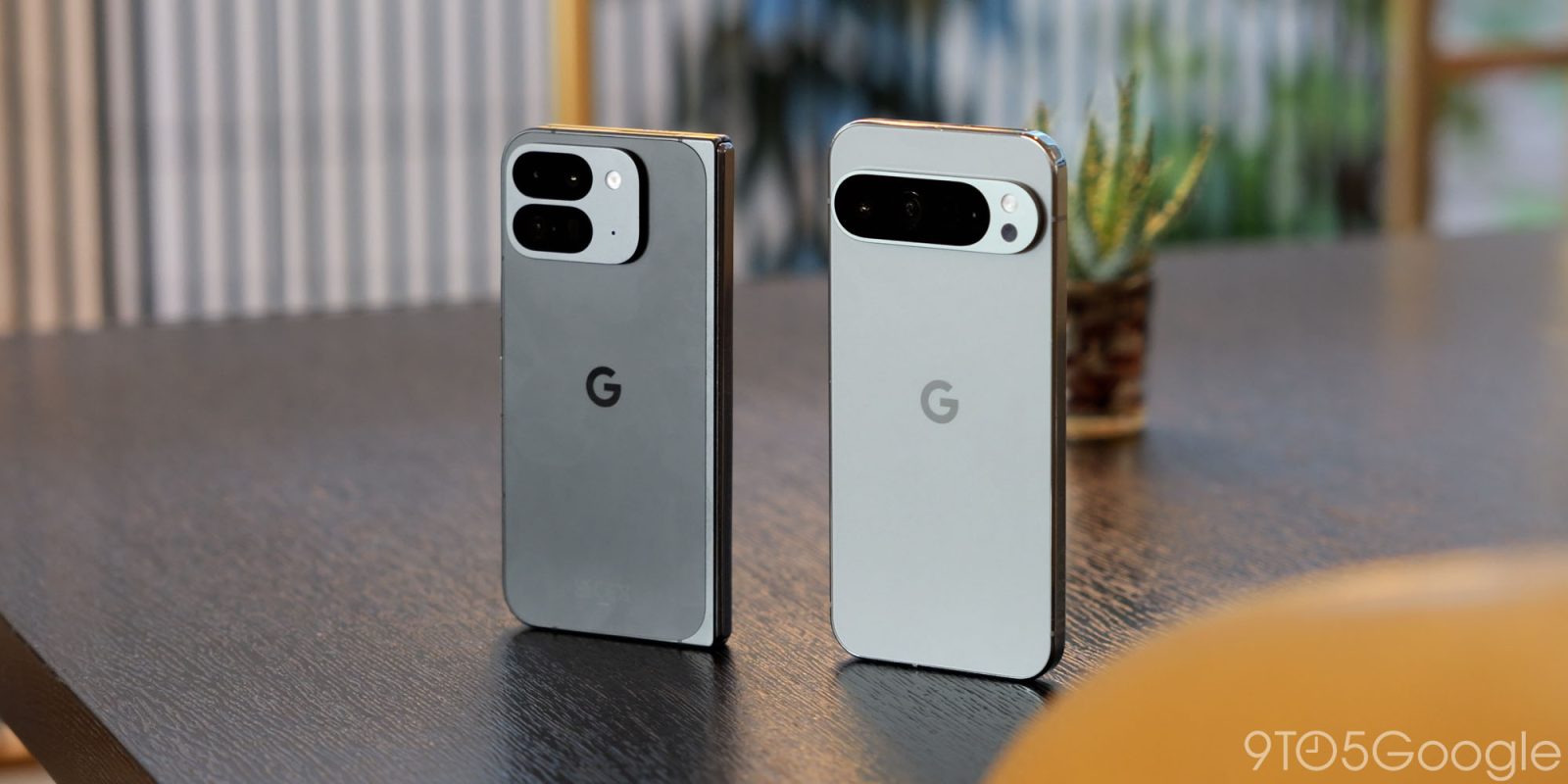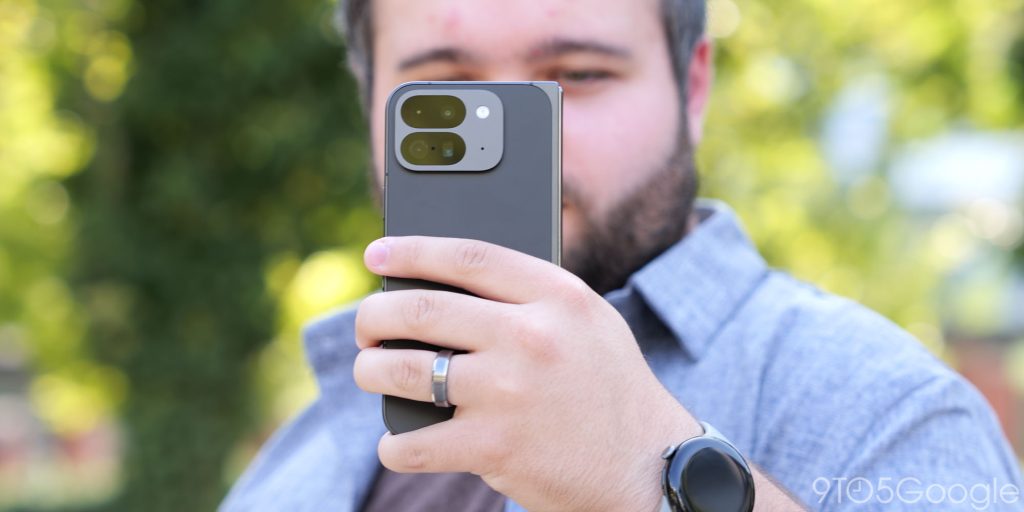
If you can stomach the $1800 asking price for the Pixel 9 Pro Fold, is it worth that extra cash over the Pixel 9 Pro XL? Here’s everything you need to know.
Are we ever going to see a switch from slabphone to foldable? Or will there always be two distinct lines drawn in the sand? Time will tell. Until a time at which we hit an inflection point, we’ll need to suffer through some misfires and limitations with high prices before a foldable can offer the “best” of everything that regular phones can boast.
Table of contents
Design and hardware differences
I personally think the switch from a passport-style foldable to the bigger form factor is a net negative. I liked that you had a small phone at the front and a big tablet display inside because it made the form factor way more attractive from a small-to-big utility standpoint. That said, the Pixel 9 Pro Fold now has more in common with “regular” phones like the Pixel 9 Pro XL. The front footprints are not all that different this year. It makes the switch easier to understand and cohesive from a software standpoint because you have parity.
It represents an admission from Google that people want an outer screen that works more like a “normal” phone with dimensions we’re instantly familiar with. At 6.3 inches, it’s about the same as the regular FHD+-rated Pixel 9 display, while the Pixel 9 Pro XL has a whopping 6.8-inch panel.
They’re 120Hz OLED, but the Pixel 9 Pro XL has a higher 3000 nit peak brightness and is rated at QHD+. The outer screen of the Fold doesn’t quite ape the Pro XL’s quality as it’s not LTPO and therefore can’t dip below 60Hz, but it isn’t a million miles away. The inner screen is now 8 inches. It’s still 120Hz, QHD+, but has a 2700 nit peak brightness. For content, it slaps the Pixel 9 Pro XL around by virtue of the increased real estate and optimizations, which make it ideal for hardened multi-taskers or content consumers.


Visually, there are many similarities. Sharper edges, a more prominent floating camera bar, and some other little tweaks help round out the two devices. It’s impressive how thin Google has made the Pixel 9 Pro Fold. It’s only a few millimeters thicker when closed. When open, it’s much thinner. Another surprise is that the Pixel 9 Pro Fold is only just 30g heavier than the Pixel 9 Pro XL – at 257g and 221g, respectively. That isn’t a huge difference.
Google only offers the Pixel 9 Pro Fold in two colors: Porcelain and Obsidian. It’s worth noting that the matte side rails also look way more premium than the shiny, metallic sheen of the four Pixel 9 Pro XL color options.
However, due to the folding design, the Pixel 9 Pro Fold lacks some of the Pro XL’s durability and in-hand stability and has a lower IP rating.
The Pixel 9 Pro Fold’s IPX8 protection only covers basic water resistance. It will survive a dunk but isn’t advised. Because the chassis is more rugged, the Pixel 9 Pro XL’s IP68 rating means it’s safer to use around water, and dust ingress shouldn’t pose a significant risk either. 99.9% of you will use a case and be extra careful, but one sand grain could spell disaster for the Pixel 9 Pro Fold screen mechanism, so 100% bear that in mind.
Software and performance
The good news is that as these phones have been released at the same time, there isn’t going to be a newer chip coming for a while. When the Pixel Fold launched, just a few months down the line the Pixel 8 series and Tensor G3 made notable performance and efficiency gains. This year you will get performance parity and even internal hardware parity.
16GB of RAM should also ensure that things chug along nicely for a long time into the future. Major differences are limited to how the Pixel 9 Pro Fold and Android 14 handle the inner screen. It is treated like a tablet, so you get better support for split-screen, optimized big-screen apps, and the quick taskbar.
At their core, the Pixel 9 Pro XL and Pixel 9 Pro Fold are identical from a software perspective. Gemini, Pixel Studio, Pixel Screenshots, Reimagine, and the whole gamut of exclusive apps are here. The only difference being that some apps are optimized to look and work better on the larger inner screen. Apps like Gmail and the Settings app have dual-view so you can navigate and interact simultaneously.
Android 15 is expected in the coming weeks. We’re unsure how this fits into the 7-year update promise, but we’re hopeful this is a “free” upgrade within the support window. If you’re one of the few people who will be using their phone for upwards of 4 years, you’ll be supported until August 2031. That’s a long time, and we’re intrigued to see how it all pans out.
Battery and charging
In our testing, the Pixel 9 Pro XL’s larger 5,060mAh battery typically outlasts its foldable counterpart, especially when subjected to heavy usage. However, the Pixel 9 Pro Fold, equipped with a 4,650mAh battery, still delivers solid battery performance, easily lasting through a full day or mixed usage.
Here’s where things get interesting. The Pixel 9 Pro Fold might be the most expensive, but it lacks the improved fast charging of the 9 Pro XL. In fact, it’s still capped at 21W. The wireless charging is confusing as it also only supports 7.5W Qi wireless.
The Pixel 9 Pro XL has 37W fast charging and 23W wireless charging with the Pixel Stand. At least in theory, this bigger battery will go from 0-100% much faster than the Pixel 9 Pro Fold’s smaller internal cell. The truth is that fast charging is just not something the Pixel series has done well over the past few years.
Camera


The camera system is undoubtedly the biggest downgrade on the Pixel 9 Pro Fold. It just isn’t going to hold a candle to the Pixel 9 Pro XL – for better or worse. There are many reasons for this, but they all mainly equate to the physical limitations placed on the foldable design. Google is working with an ultra-slim form factor, and that means there is no room for a big camera sensor and system unless the design facilitates a huge protruding camera bump – and that defeats the purpose of the foldable design.
So, with that in mind, if you want the best stills and the best video capabilities. It’s the Pixel 9 Pro XL or bust. However, the Pixel 9 Pro Fold isn’t a major step down like you might have expected.
The main sensor is rated at 48MP, compared to 50MP on the 9 Pro XL. You still get a 10.8MP 5x optical zoom lens, and the ultrawide offers 10.5MP stills. By virtue of the telephoto, this is the second-best rear camera system on the Pixel 9 series handset this year – with a few caveats.
You do miss out on a few things, though. There is no 8K video with Video Boost and Super Res Zoom Video. The Pixel 9 Pro XL will give you objectively better images across the board with the 50MP main sensor, 48MP ultrawide, and improved 48MP 5x optical zoom lens. This system provides a little extra flexibility and quality for all kinds of photos and videos.
When we look at the selfie cameras, the Pixel 9 Pro XL gets the nod over the Pixel 9 Pro Fold because it now ships with the best selfie shooter on a Google device to date. The 42MP selfie system offers more detail, quality, and video framerates to boot.
Pixel 9 Pro XL vs. Pixel 9 Pro Fold: Which is the better buy for you?
About upgrading: 9to5Google often gives specific product recommendations. Sometimes, we may suggest not upgrading, due to various reasons including, but not limited to: increased device cost, negligible performance gains, or environmental impact. Whether to upgrade is always your call, but our aim is to help you make as informed a decision as possible.
Unlike the original Pixel Fold, the 9 Pro Fold has fewer compromises and shares more in common with the flagship Pixel 9 Pro XL. This means that objectively, it’s tough to discern which is the “better” device when all the pros and cons are laid out.
Realistically, it’ll come down to the pricing chasm. The Pixel 9 Pro XL is around $800 cheaper and if you don’t care about having dual-purpose form factor you’re actually better off with the slabphone. It has a bigger battery and a better, more capable camera system. Plus, any durability question marks are bound to dissipate as the moving parts are very limited.
On the other hand, the Pixel 9 Pro Fold looks like one of the best implementations of the foldable form factor to date. The most expensive Pixel phone is technically not the best, but does that matter? Sure, don’t quite get the outright “best” of everything, but what you do get is something that no other Pixel can offer. The big screen experience paired with a usable external phone means it’s at home in more places and a great dual-purpose phone.
For most people the Pixel 9 Pro XL will be a great upgrade, but if you want something that isn’t like the rest of the Pixel series – go for Google’s best foldable.
Get the Pixel 9 Pro XL
Get the Pixel 9 Pro Fold
FTC: We use income earning auto affiliate links. More.




Comments